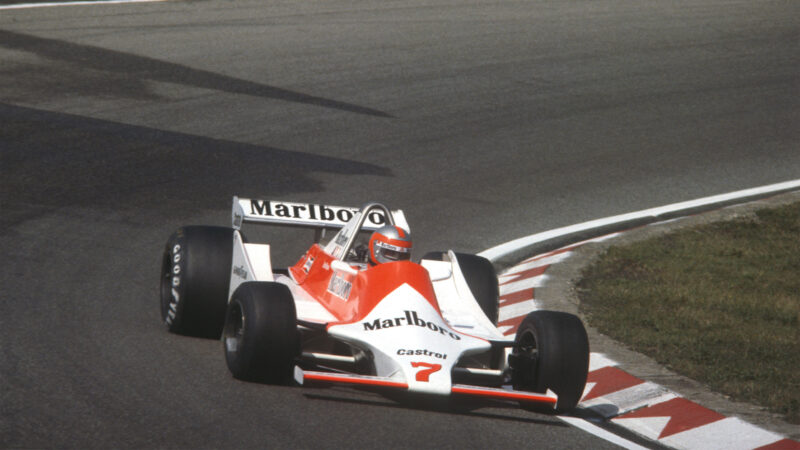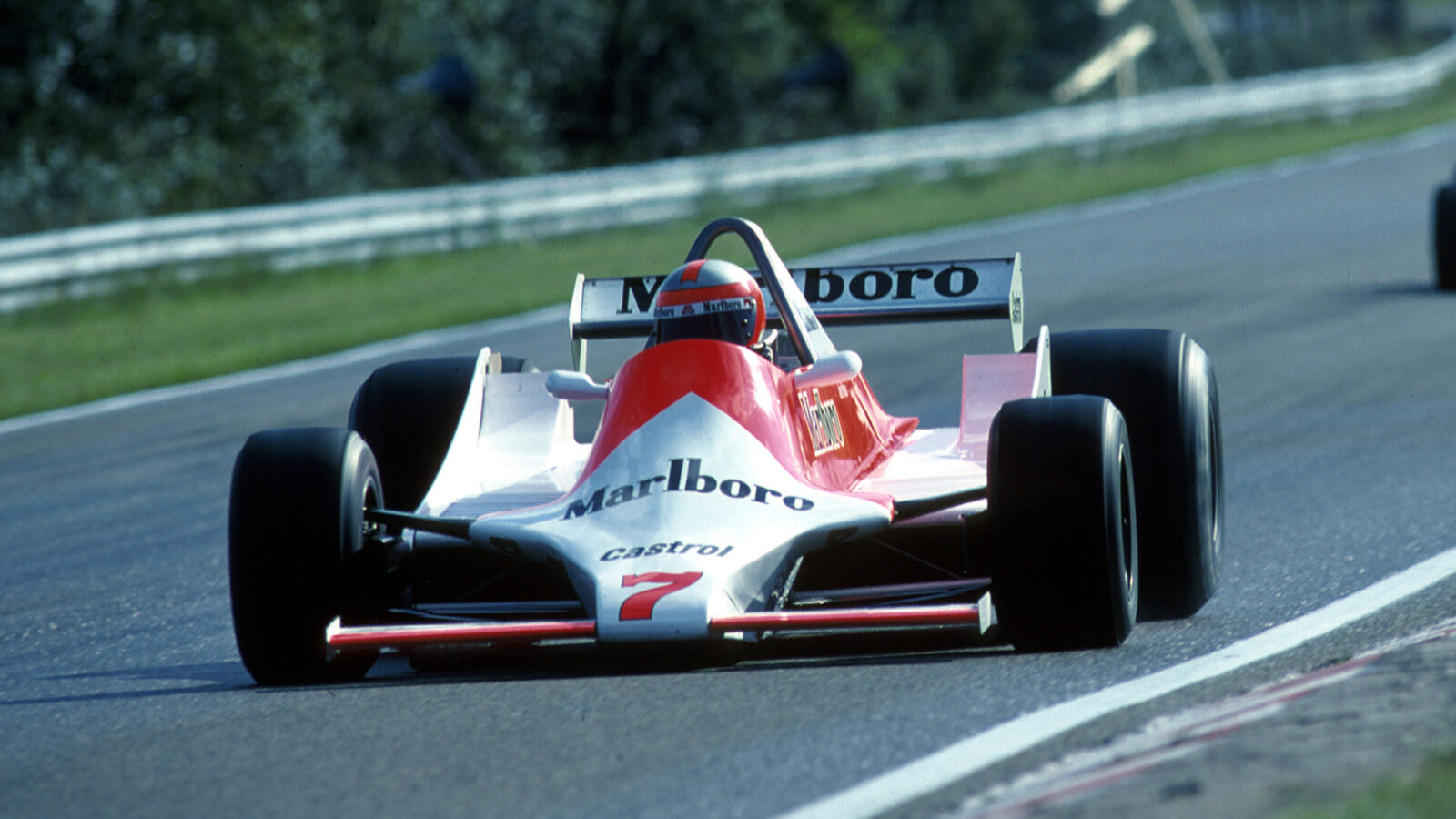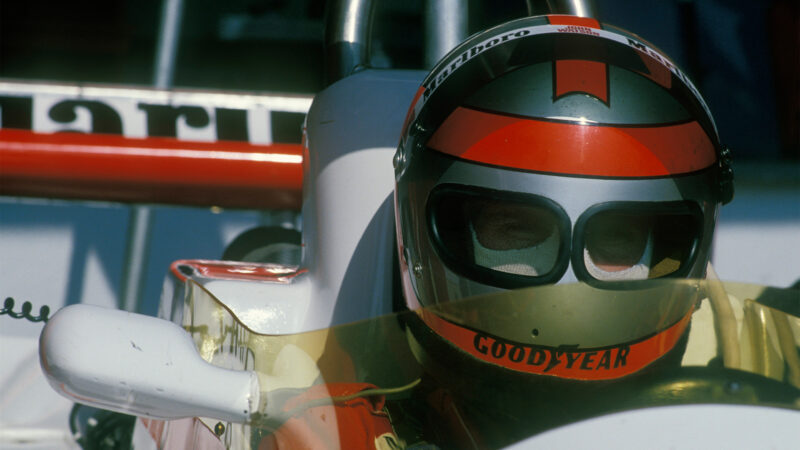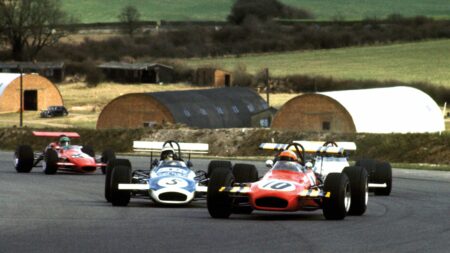Eventually we got it going around Silverstone in a time comparable to the Brabham-Alfa from the ‘77 British Grand Prix and we began thinking that maybe around Silverstone there wasn’t a great deal of difference between a ground effect car and a conventional one. Which was a mistake. Then we took the car out to Watkins Glen in November. After a few laps we had a small problem and they took it back into the pit garage.
We then discovered the similarity between an M28 and Concorde. When put on it; axle stands, the nose drooped! Alistair Caldwell who was in charge of the test said, “Ern… I think we’d better stop and take it home.” There was just no torsional strength in the car at all. A paper bag was more rigid.
They did a lot of work at the factory to give it some rigidity, but that made it horrendously overweight. Virtually everything about the car was wrong. They’d designed it to take maximum advantage of the length and width regulations to give it as big a venturi area as possible, which fundamentally was a good thing. To the same end, they made the monocoque very slim so they could give more space to the sidepods. But add to this a huge fuel tank, giving big sectional changes, and an aluminium honeycomb structure and you have the recipe for the torsional problems. But it was badly wrong aerodynamically too with the centre of pressure moving about all over the place.

The M28 was wrong in every way
Grand Prix Photo
As the season went on they tried different wheelbases which just upset the weight distribution; they were trying to rectify an aerodynamic problem by traditional mechanical means. It was real scattergun engineering. To understand how it could happen, you have to consider that McLaren had had a lot of success with conventional cars. Before the ground effect era you could expect to find perhaps half a second per season from things like suspension geometry and they were fantastic at that stuff, the meticulous development work. But ground effect required a different approach. Suddenly downforce was everything and you had to throw the old benchmarks away. They were impressed that it may have had twice the downforce of an M26 or whatever. But that meant nothing. The design team just didn’t have the vision to see the potential of ground effect.




